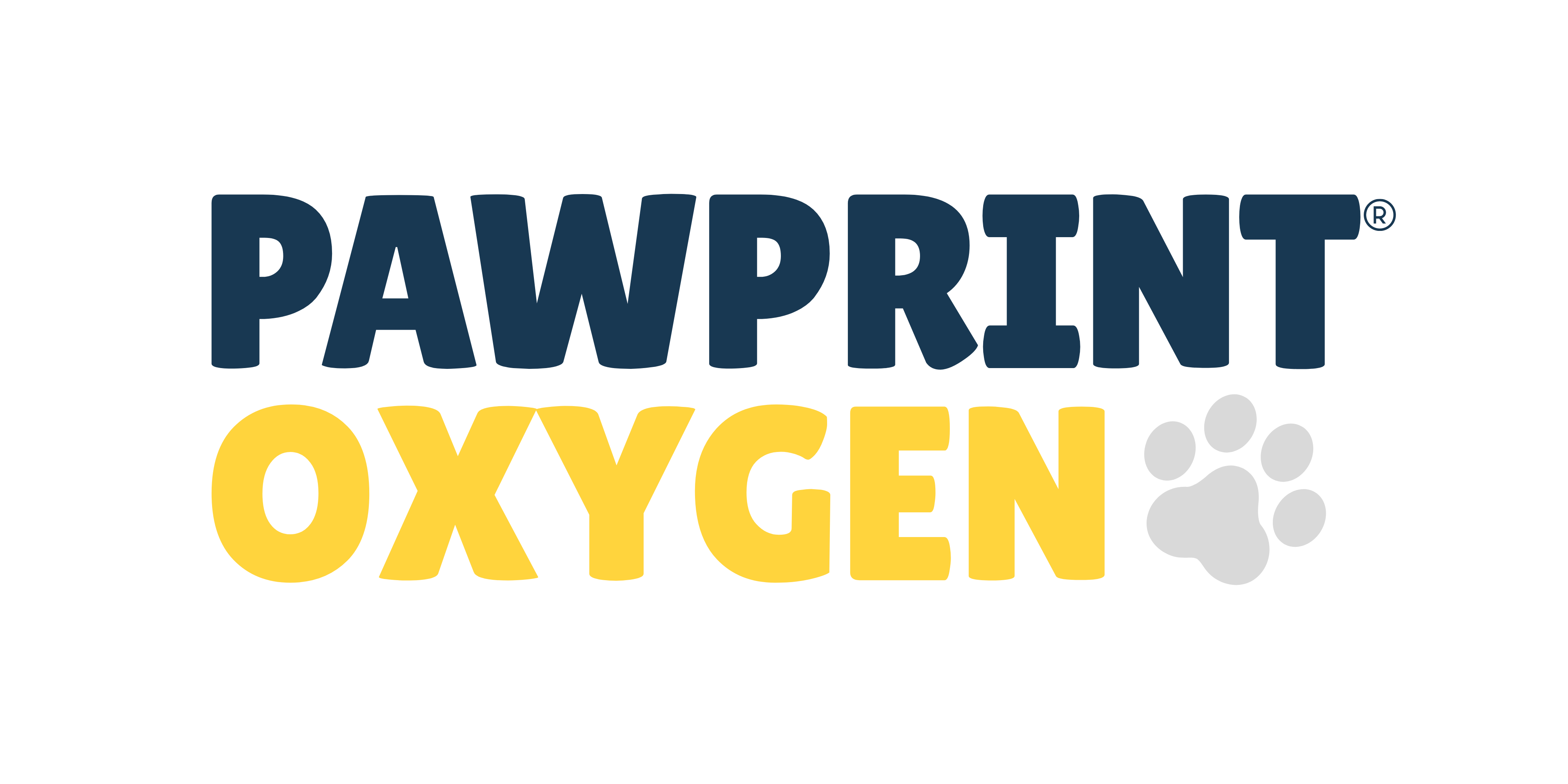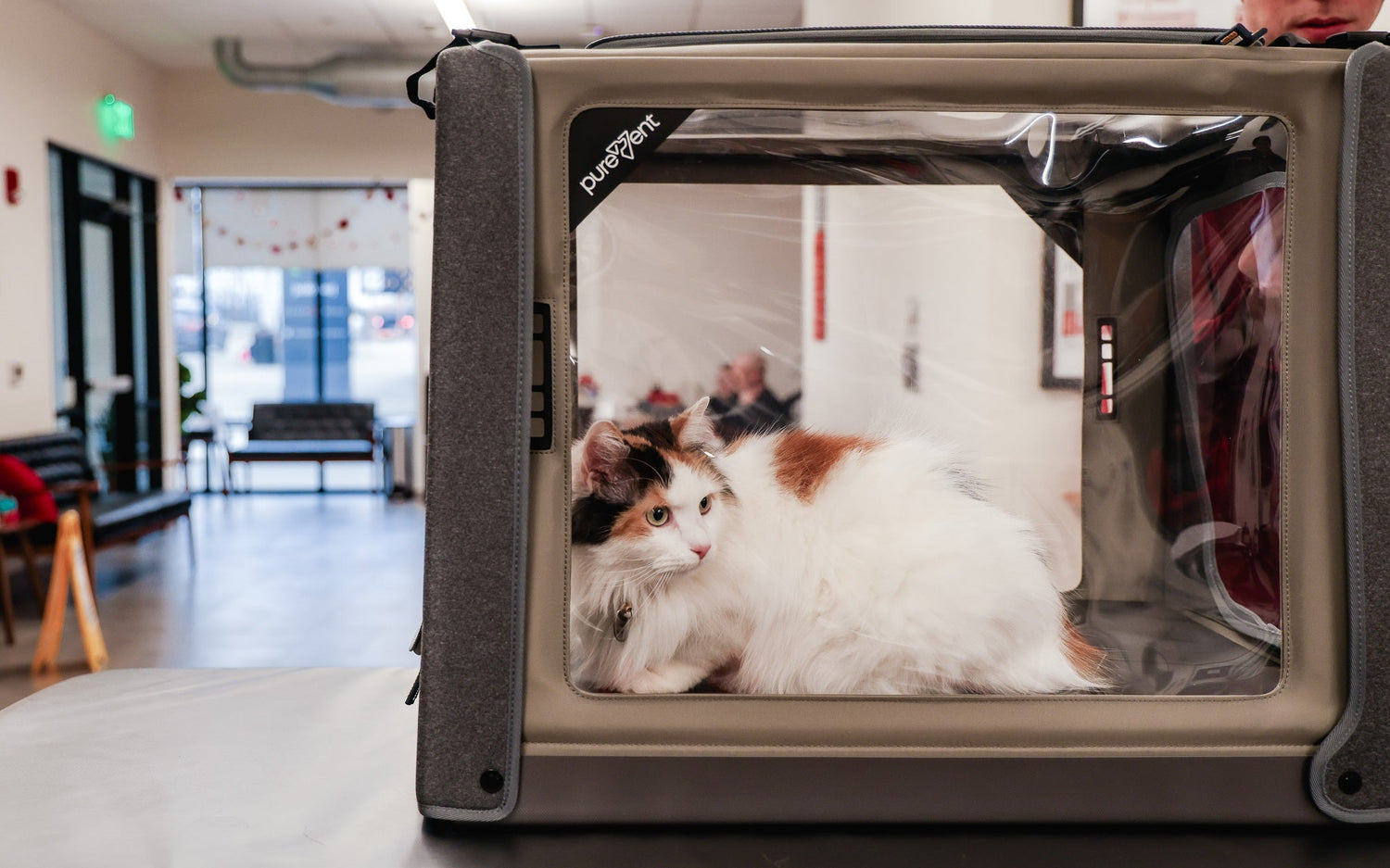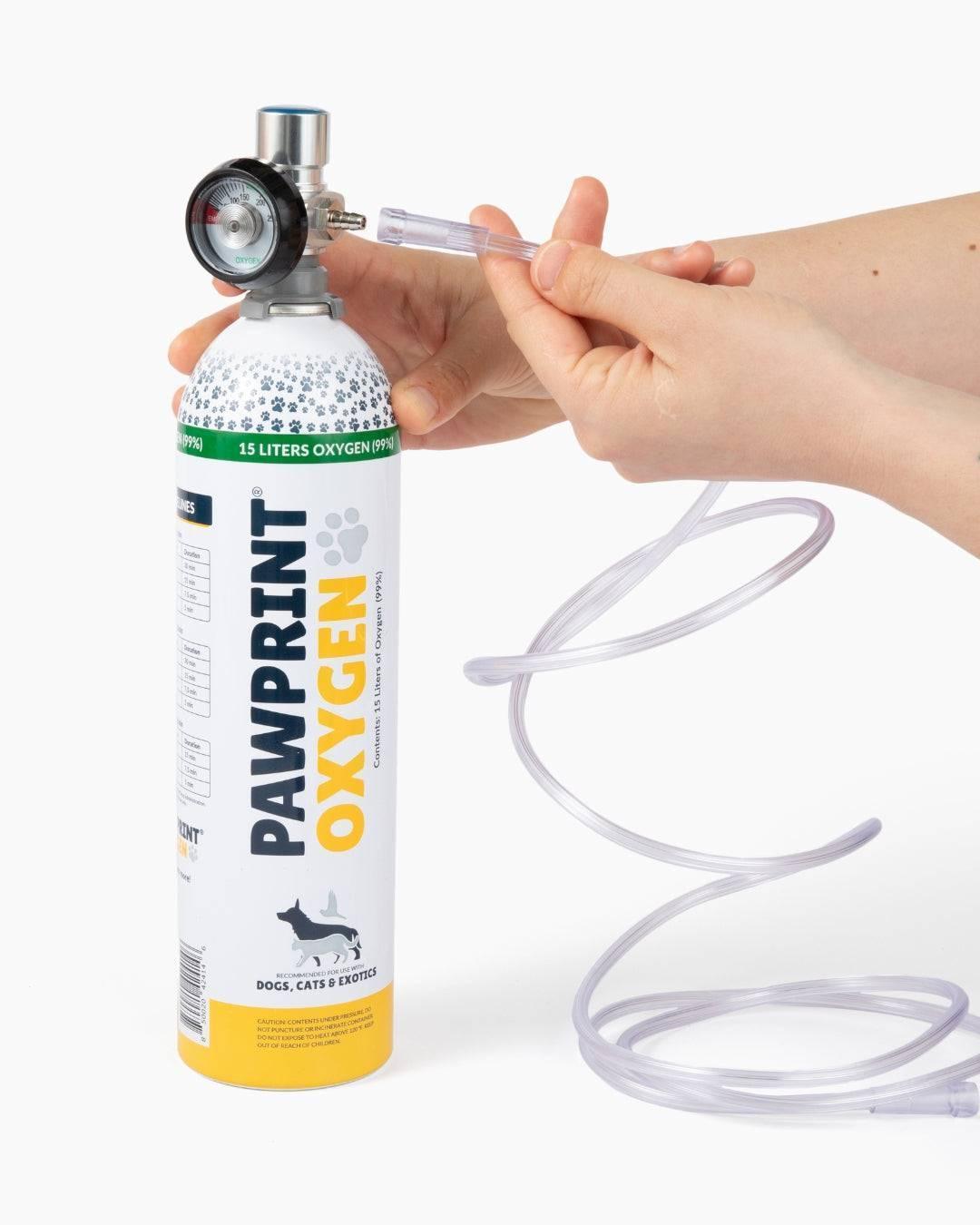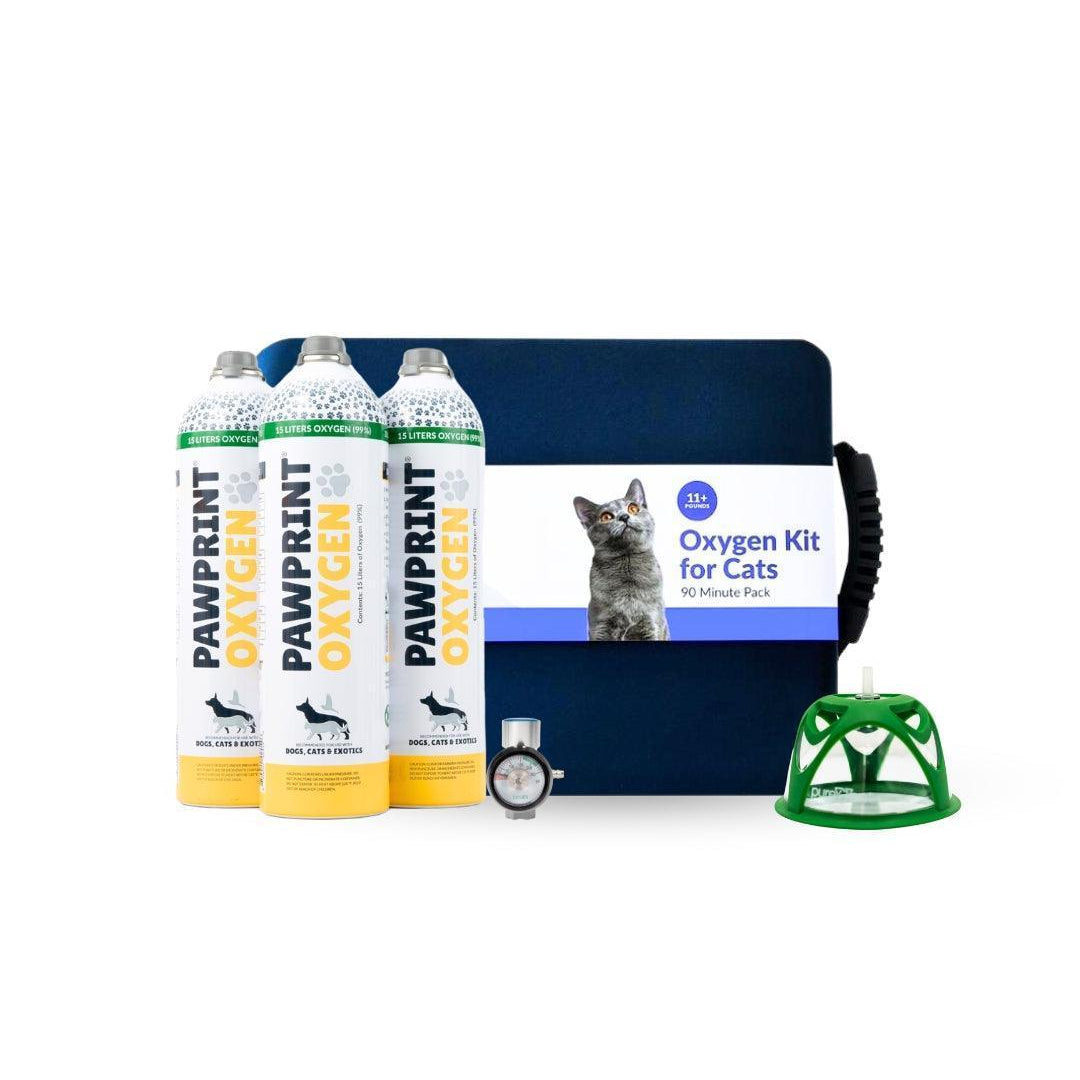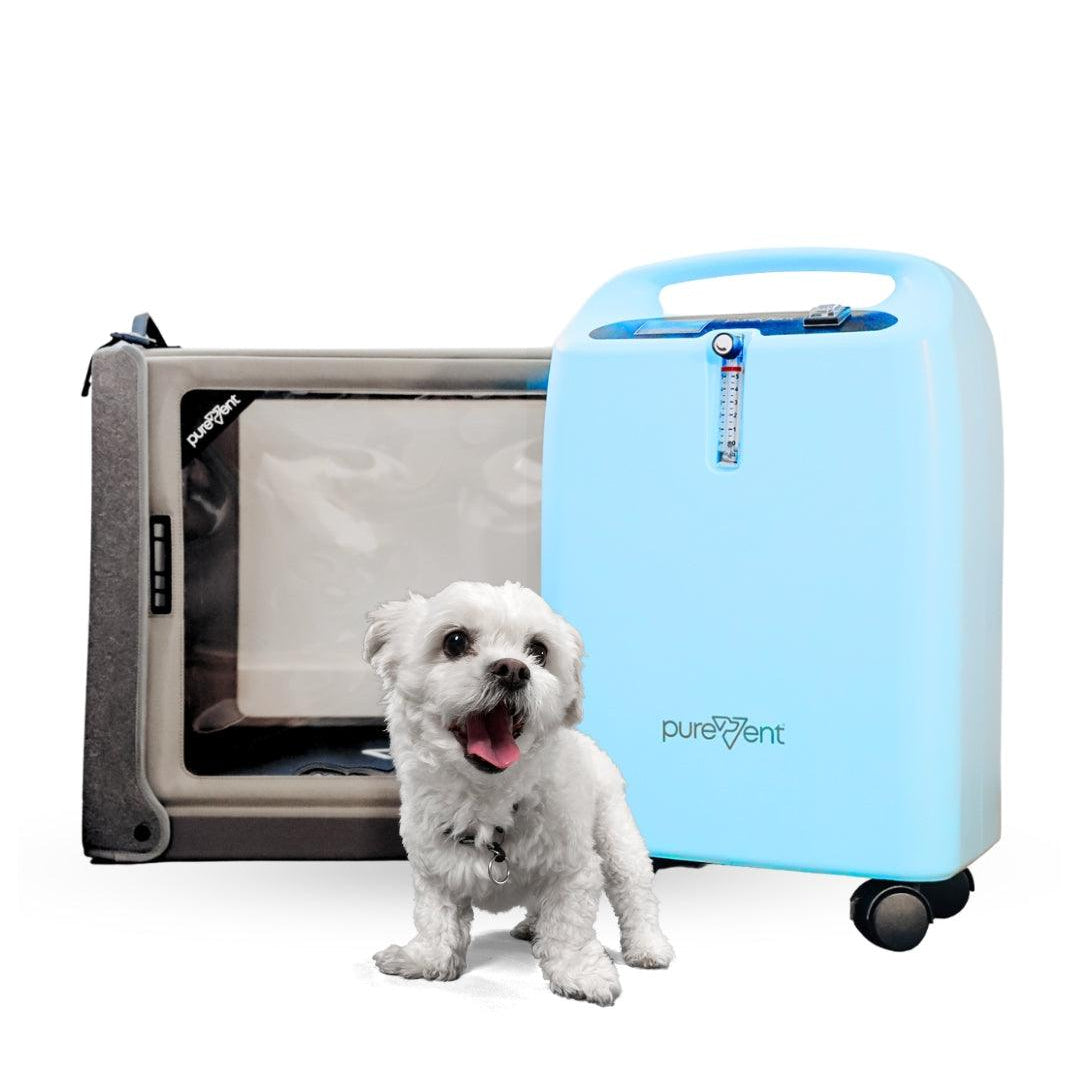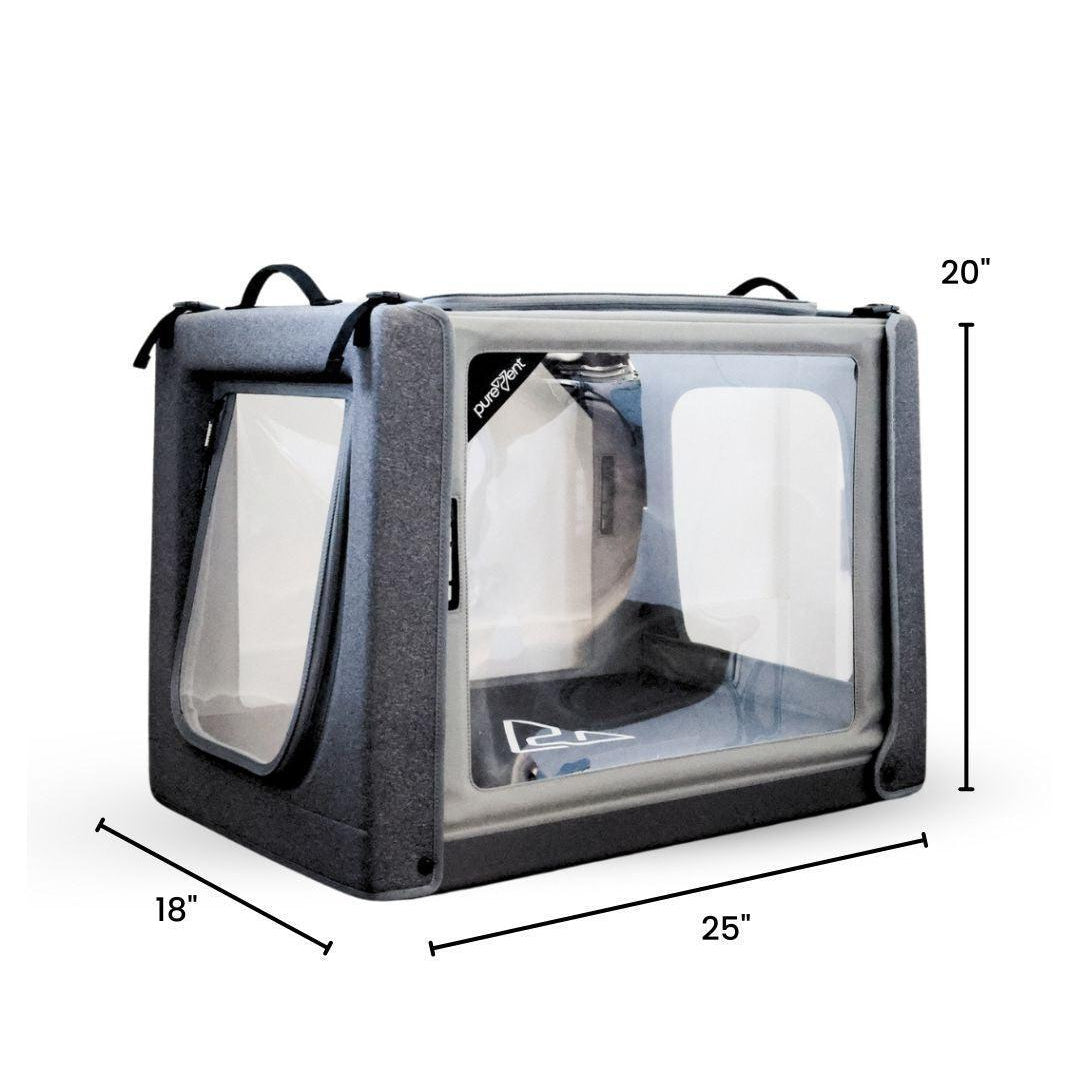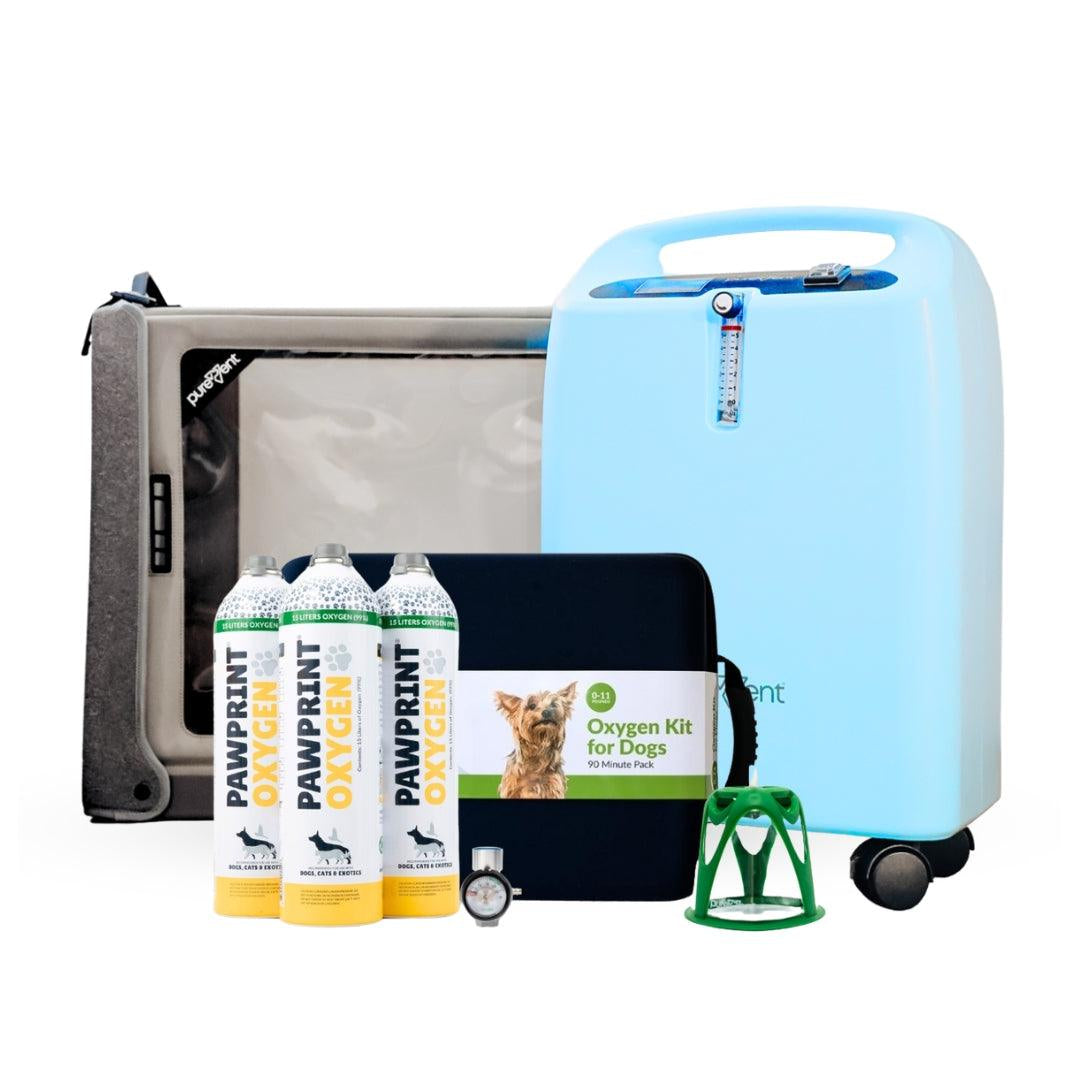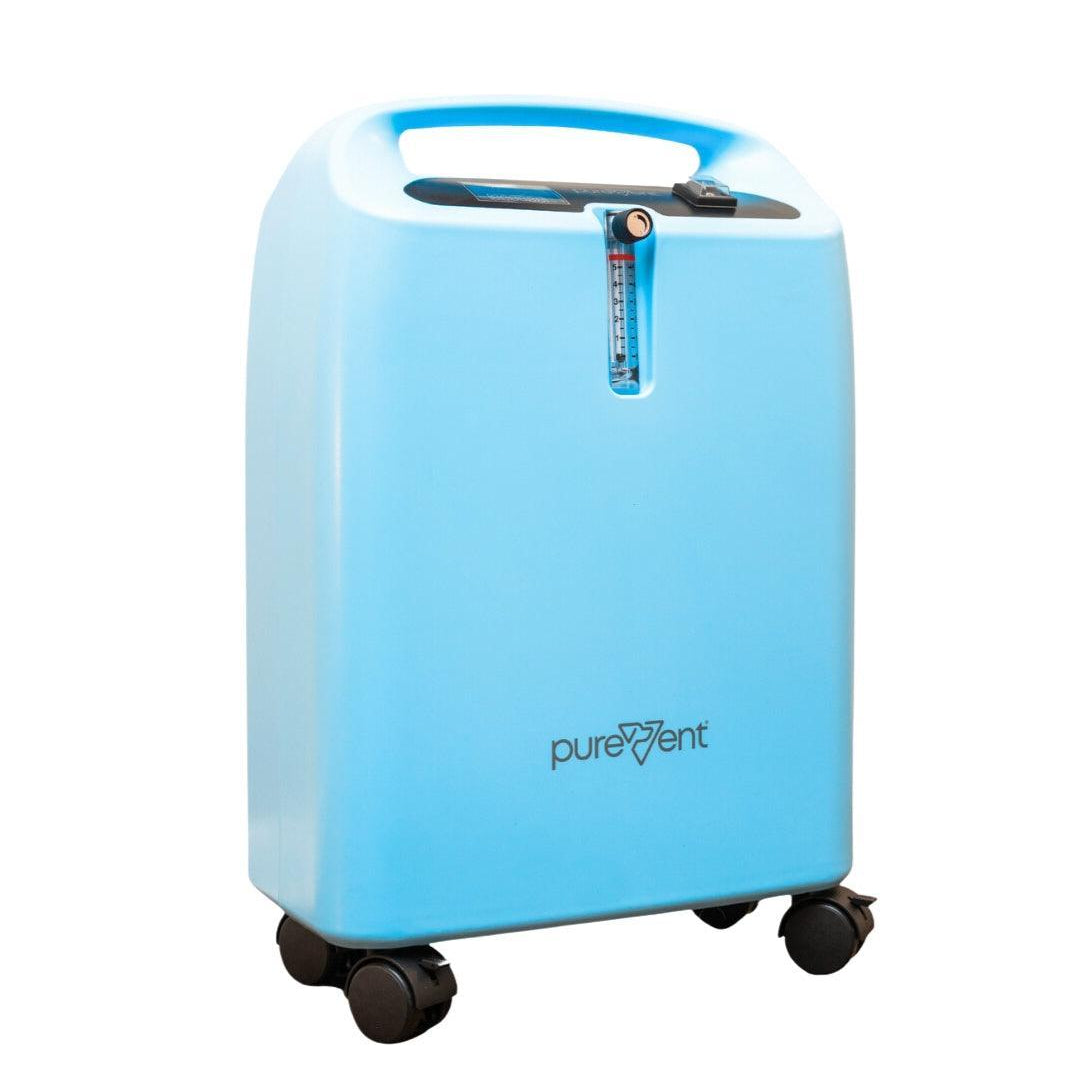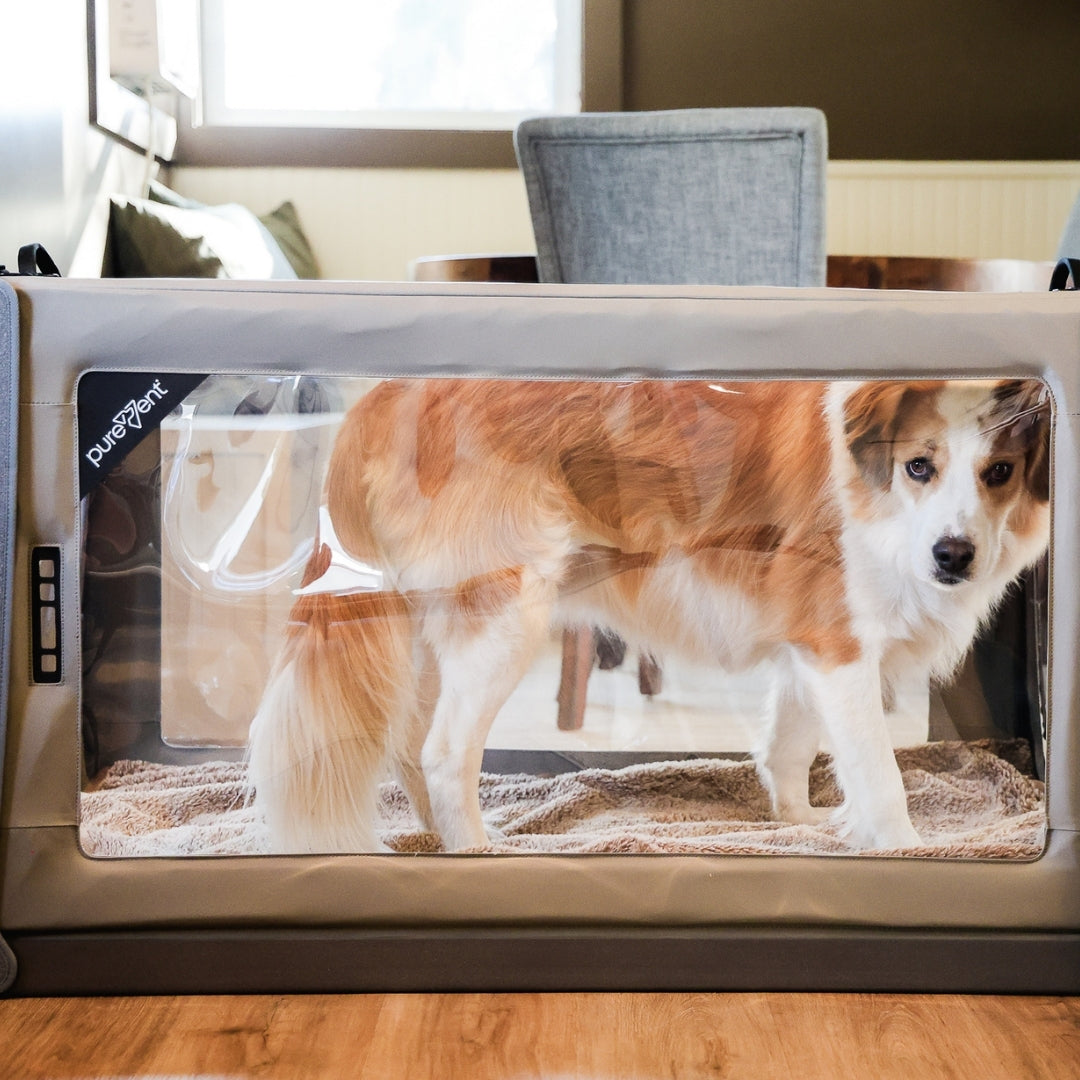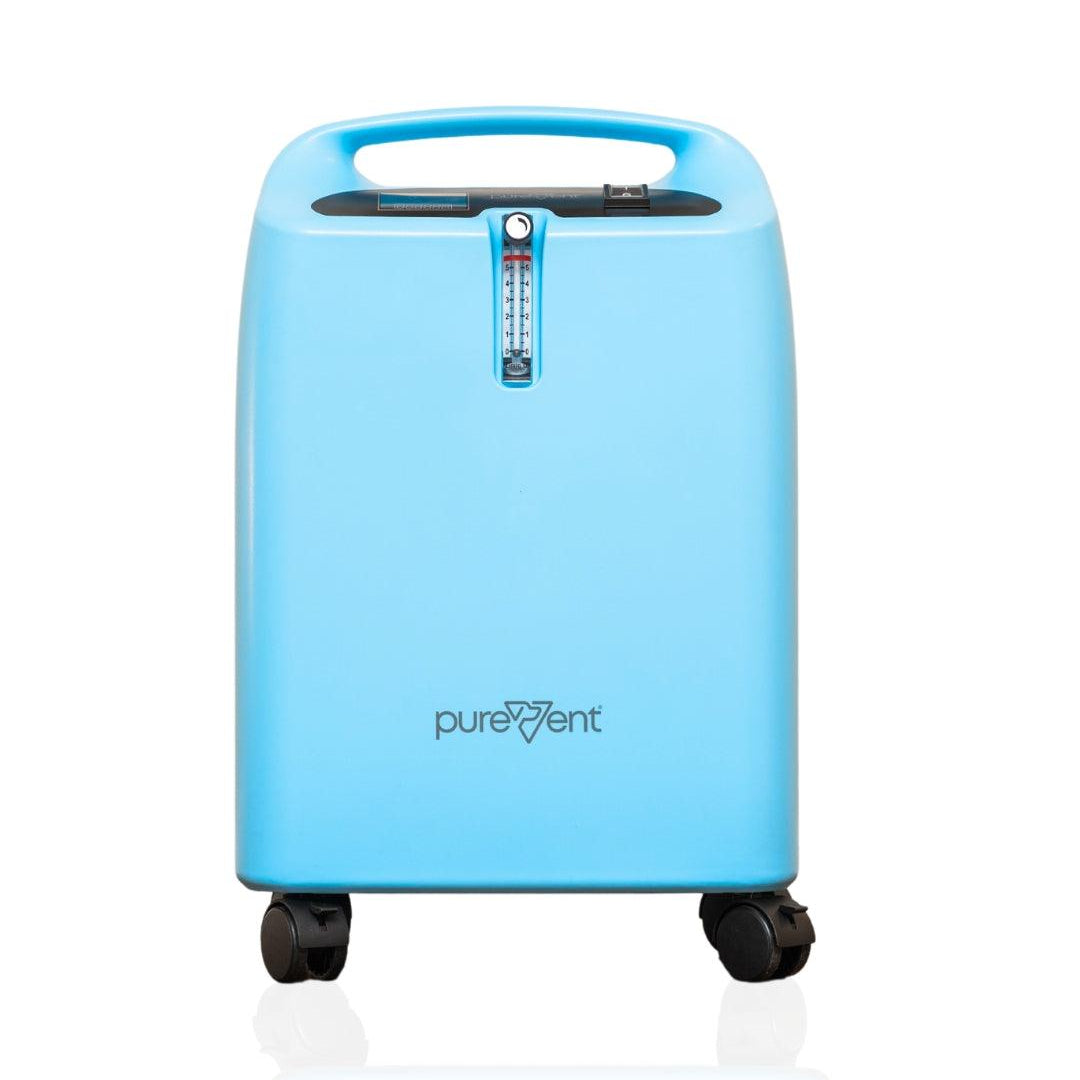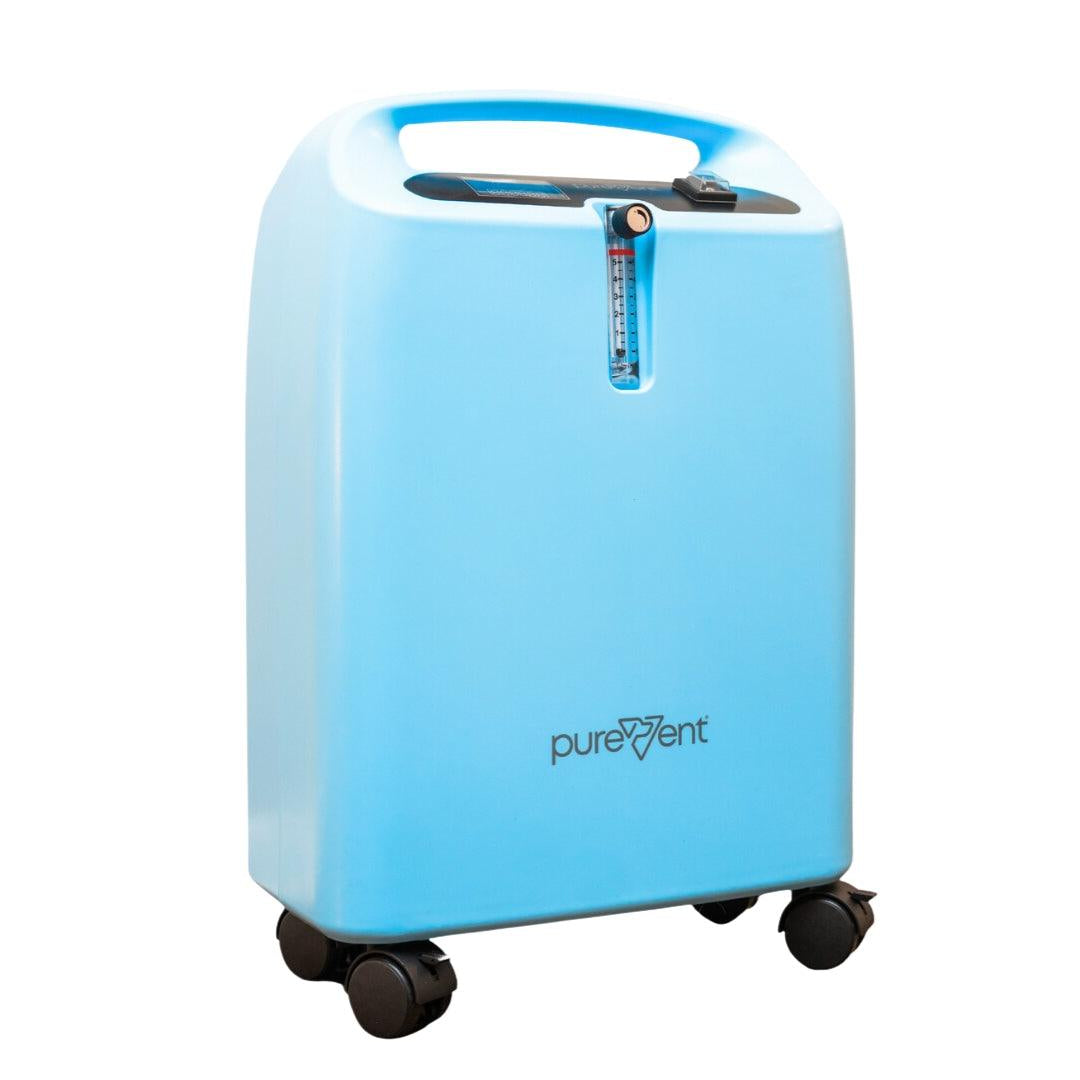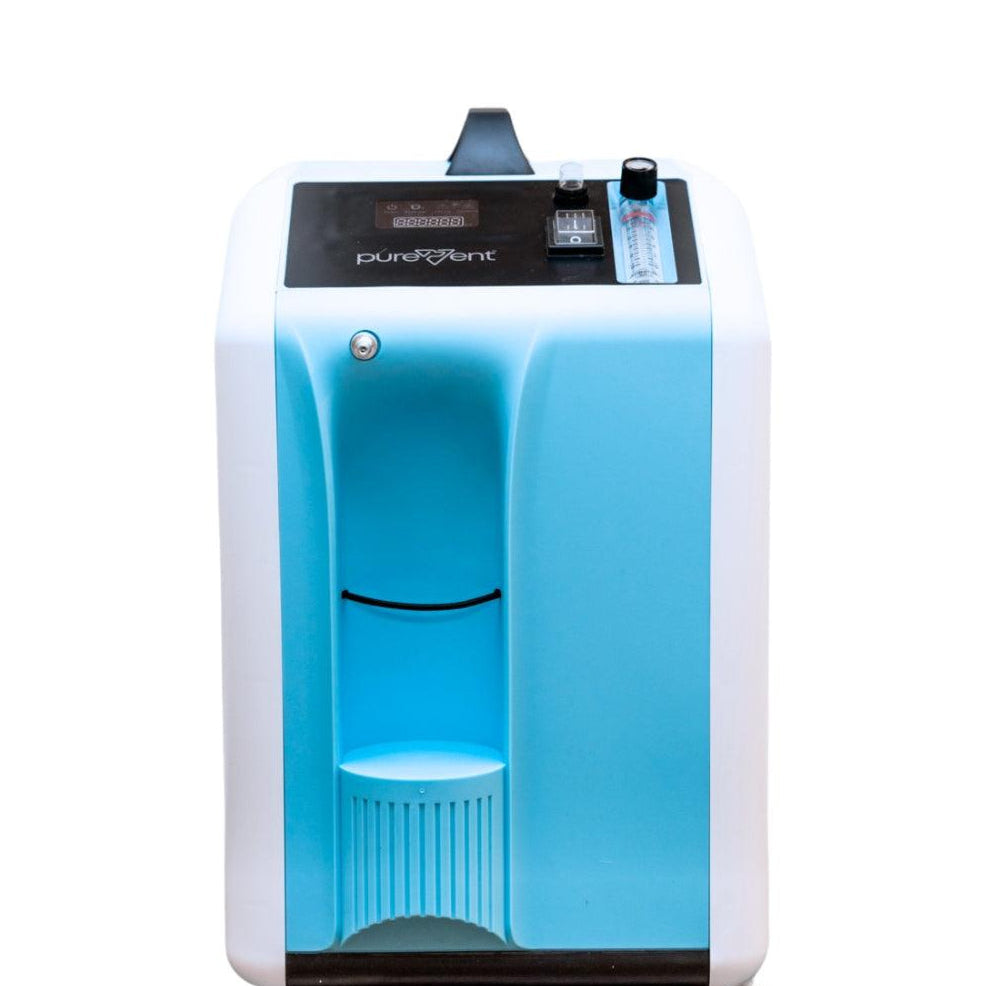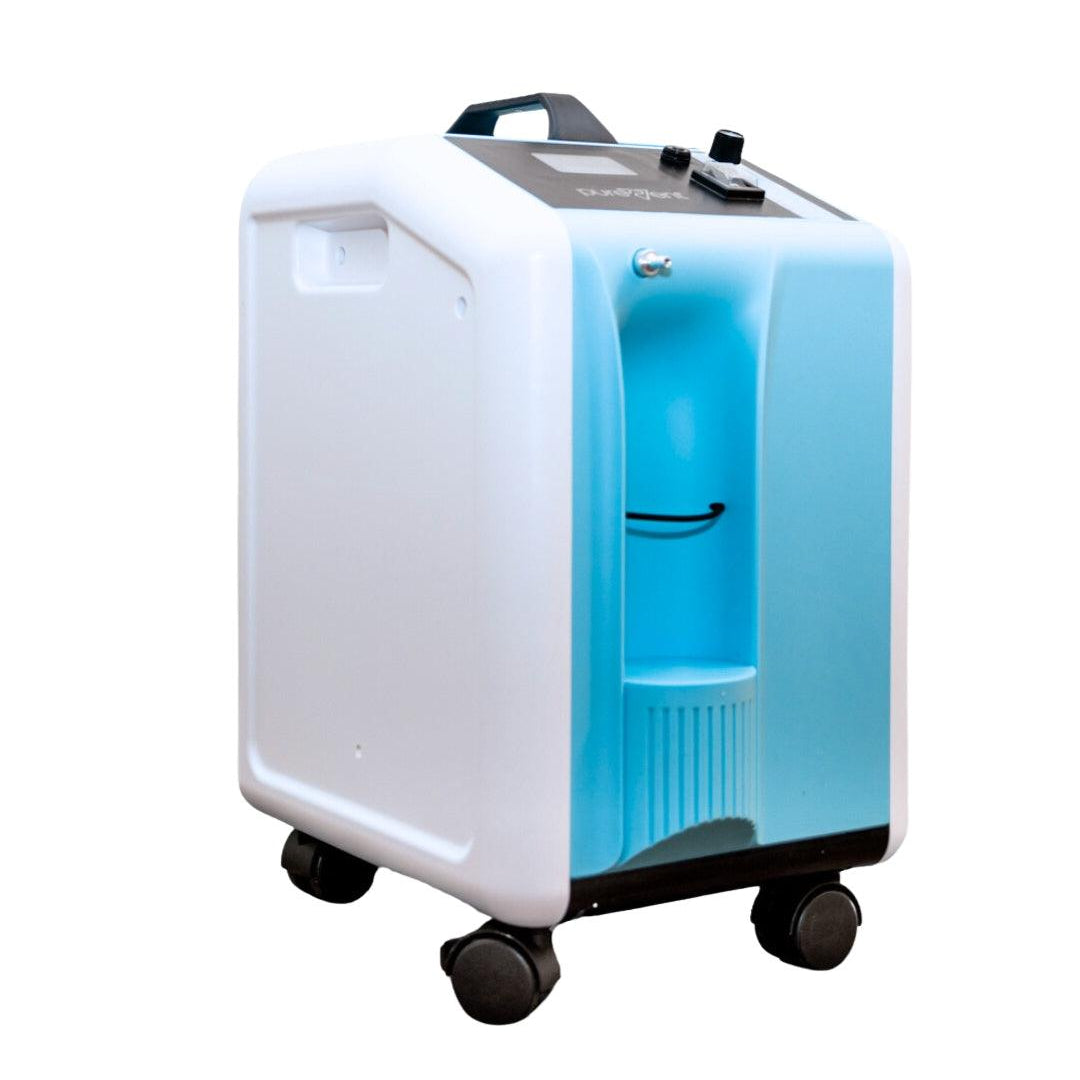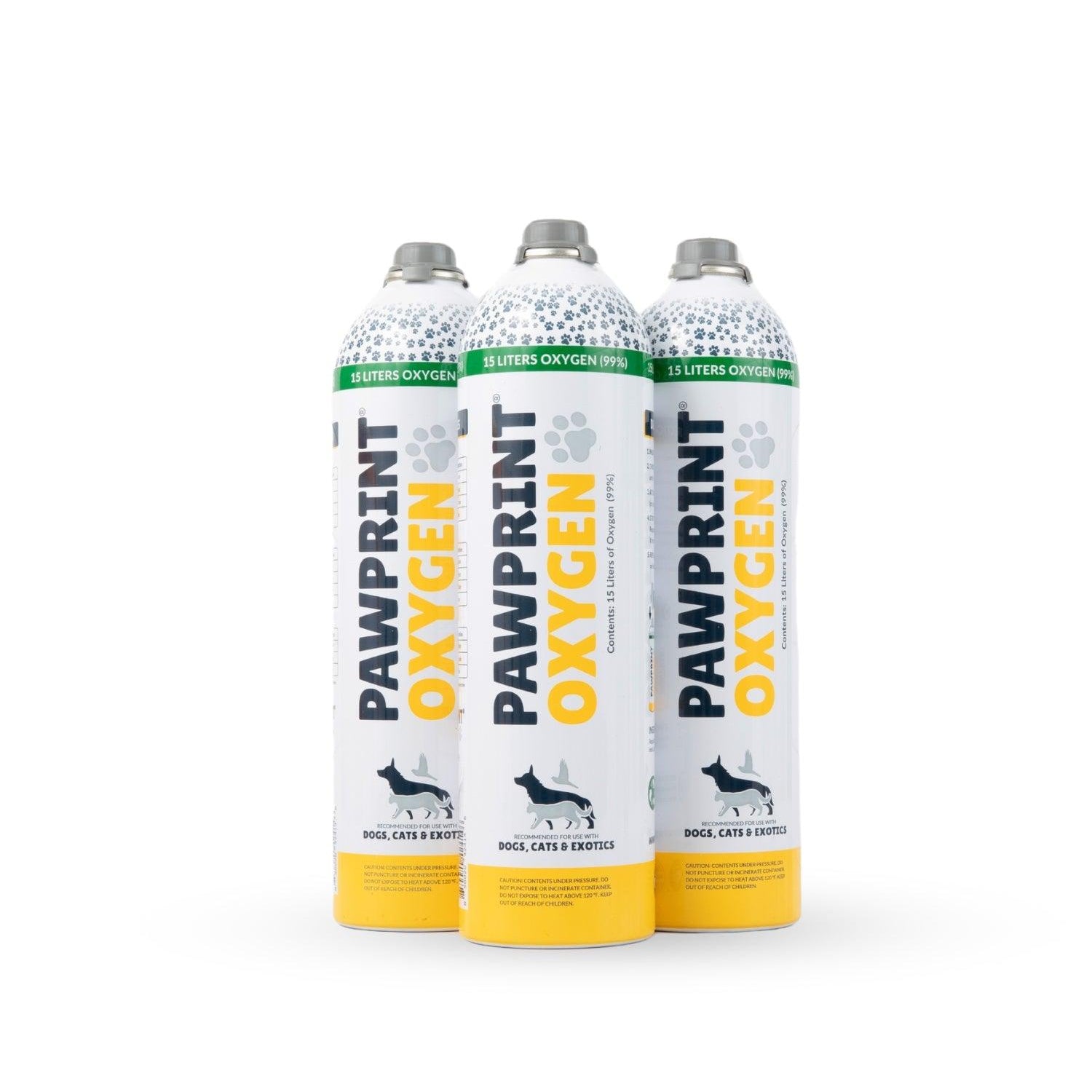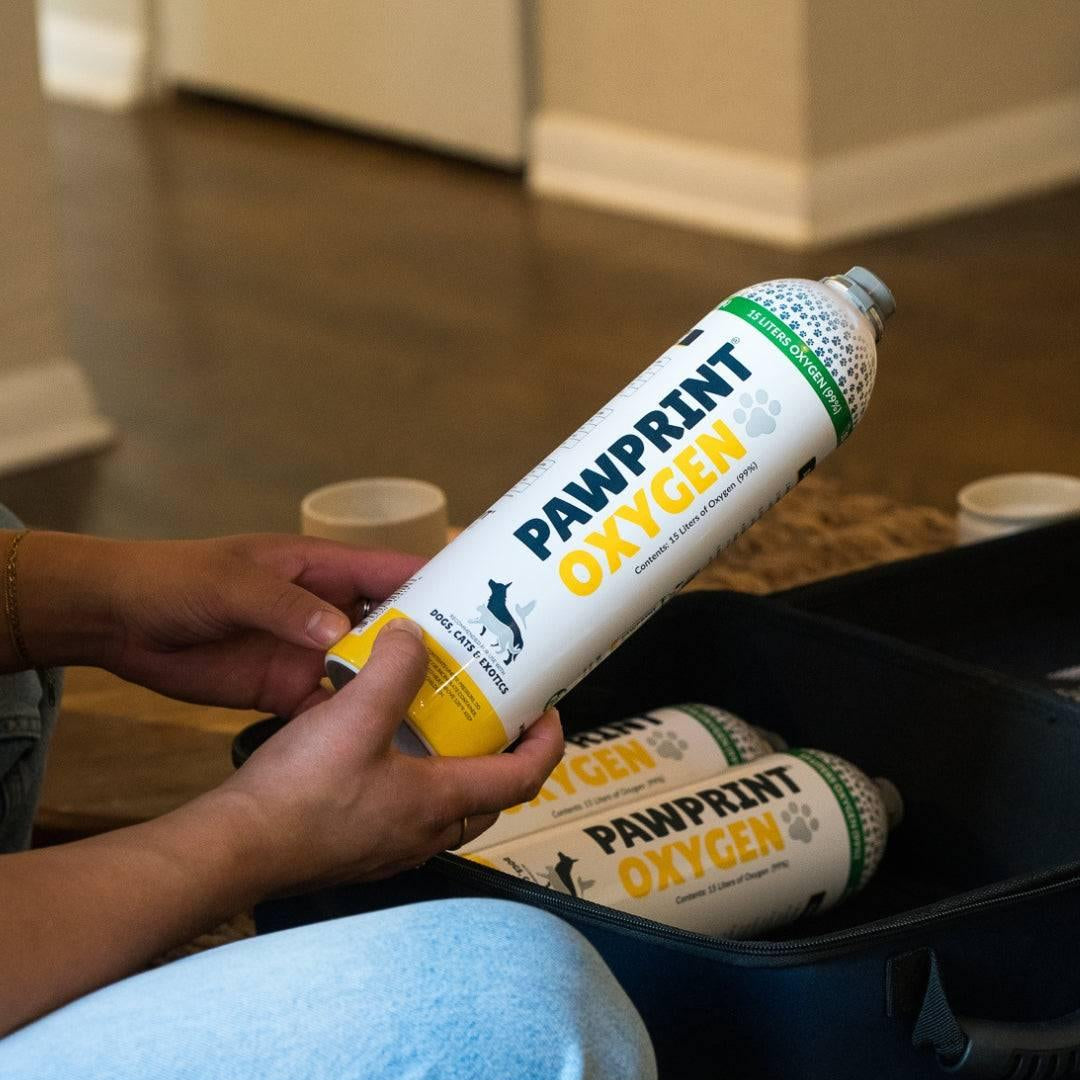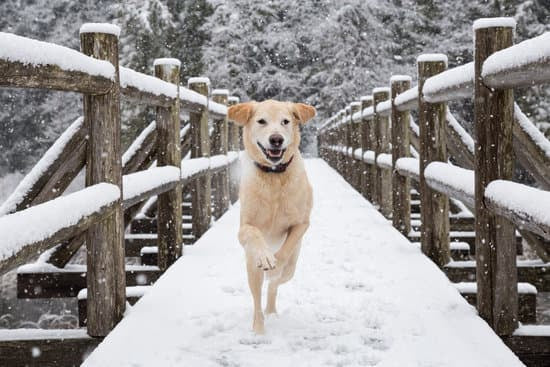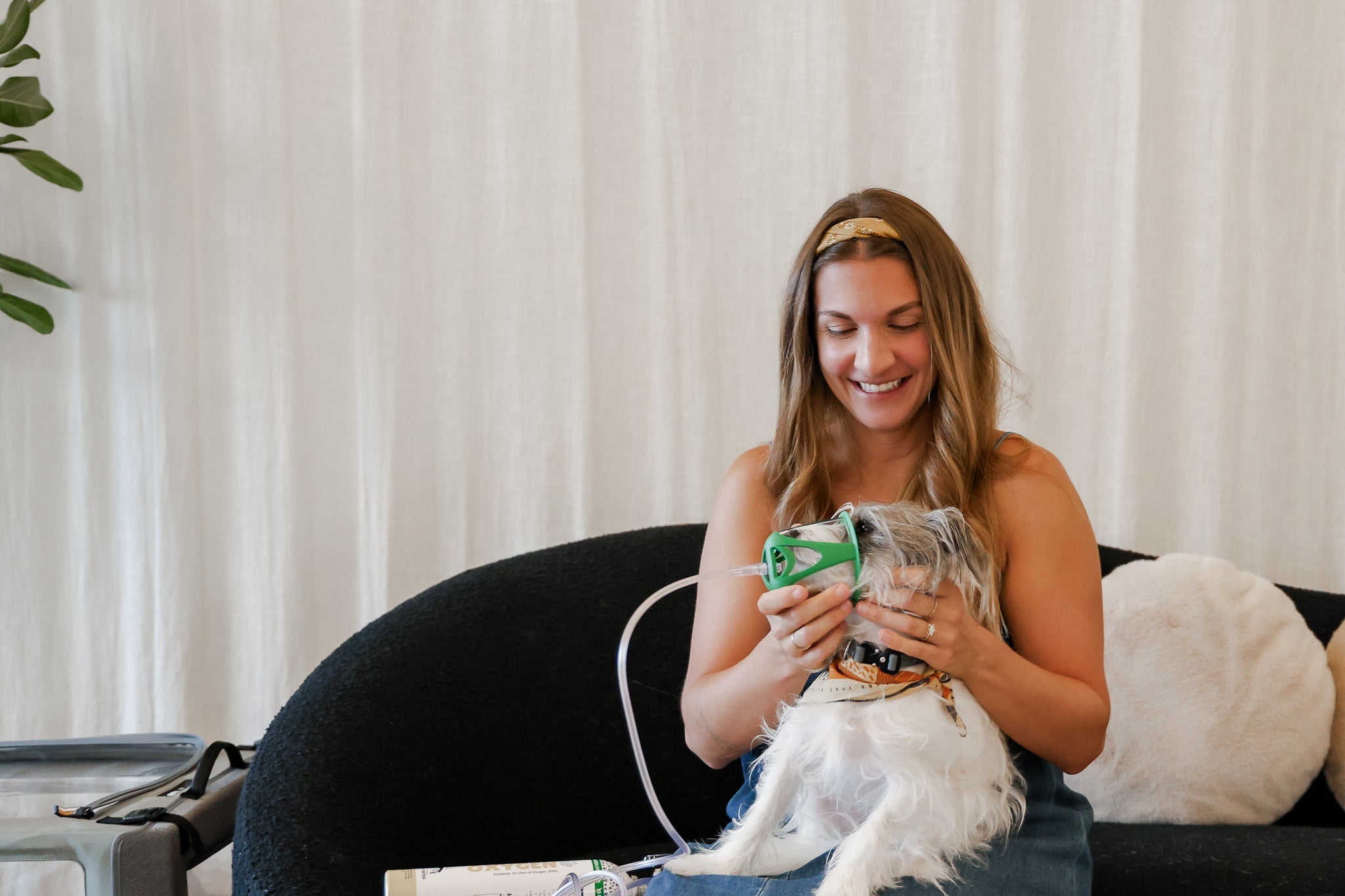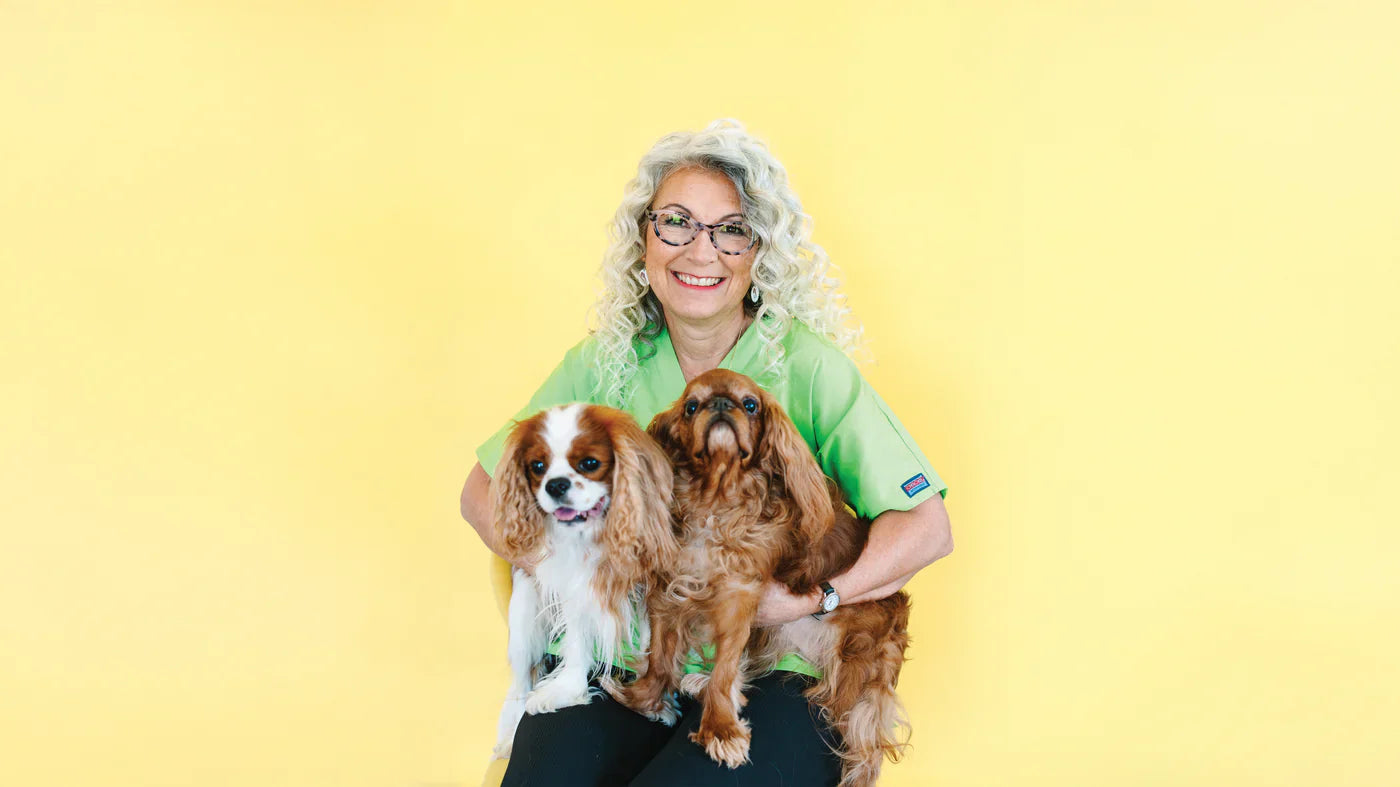Introduction to Pet Oxygen Chambers
Pet oxygen chambers, like the PureVent Pet Oxygen Chamber, can be used to provide extended oxygen therapy to your pet at home to treat various conditions, including pneumonia, congestive heart failure, cancer, collapsing trachea, feline asthma, and more.
Table of Contents
💡 Did you know
Did you know that hyperbaric oxygen therapy, commonly used in human medicine for conditions like decompression sickness and severe infections, is also available for pets? This treatment involves placing the pet in a pressurized chamber and administering 100% oxygen. Hyperbaric oxygen therapy (HBOT) can accelerate healing in pet suffering from a variety of conditions, such as severe wounds, certain types of infections, and even neurological disorders. It's like giving your pet a supercharged boost of oxygen to help their body heal more efficiently!
4 Things to Consider When Selecting an Oxygen Chamber for Your Pet
Number 1: Select the Correct Size Chamber
Be sure to choose a pet oxygen chamber size that fits your pet and your oxygen source. Bigger oxygen chambers require higher oxygen flow rates to create a safe, oxygenated environment for your pet.
The standard size PureVent Pet Oxygen Chamber and is for pets up to 30lbs. This chamber size requires a 5 Liter flow rate from the oxygen source. The dimensions are 25"L x 20"H x 18"W.
The large Buster ICU Oxygen Chamber is 44"L x 26"H x 26"W and is for pets up to 70lbs. This chamber size requires a flow rate of 10 Liters to create a safe environment.
Number 2: Does Your Pet's Oxygen Chamber Have an Oxygen Supply Connection?
A medical-grade oxygen concentrator is required to supply a pet oxygen chamber and create a safe environment for your pet. If you notice that the oxygen chamber you are looking at does not have a place to hook up an oxygen supply, like a concentrator, it is most likely not medical grade, and can be dangerous for your pet.
You'll need an oxygen concentrator to supply oxygen to the pet oxygen chamber to ensure your pet is receiving a high turnover of fresh oxygen the entire time they are receiving therapy. A medical-grade oxygen concentrator is able to provide a continuous flow of oxygen by pulling in room air and filtering out the other gases from the oxygen. The oxygen is then used to give therapy.
With the assistance of the Venturi adapters that come with the PureVent Pet Oxygen Chamber, you can also set the concentration of oxygen based on your veterinarians recommendations and the needs of your pet. For example, may pets with heart conditions need a 60% oxygen saturation. By using the correct Venturi adapter, the oxygen chamber will fill with 60% pure oxygen and 40% room air. The most common oxygen saturation for pets is 40%.
Number 3: Does Your Pet Oxygen Chamber Allow You to Adjust The Oxygen Saturation Level?
Make sure your oxygen chamber allows you to set the oxygen saturation. If the saturation is too high or too low, it can be dangerous for your pet. The best pet oxygen chambers on the market provide pet owners with a way to adjust the saturation level to customize their pet's care, like the Venturi adapters that are included with the PureVent Pet Oxygen Chamber.
Number 4: Does The Pet Oxygen Chamber Prevent Dangerous Carbon Dioxide Build-up?
Your pet expels carbon dioxide with every breath. Make sure your chamber has a way to prevent dangerous carbon dioxide buildup. Simply venting the chamber may not be enough. With the PureVent Pet Oxygen Chamber, built-in Hypalon vents ensure that excess CO2, heat and humidity can escape while still maintaining a high saturation of oxygen. Additionally, the Venturi adapters increase the airflow into the oxygen chamber, which in turn helps to ensure a fresh supply of oxygenated air into the chamber during the entire therapy session. This also helps to push old, CO2 filled air out of the vents. The Venturi adapters also help to rid the chamber of excess heat and humidity, which can exacerbate symptoms of respiratory distress.
How to Select the Correct Oxygen Chamber Size for Your Pet
Your pet’s weight is a helpful guideline for selecting the size of the pet oxygen chamber, but it’s important to measure your pet’s height and length to ensure that you are purchasing the correct size. Compare your pet’s measurements to the dimensions of the chamber and make sure your pet has a few inches on each side to move around. Remember that adding comfort items like a favorite bed or blanket, and even a dish of food and water, can help pets more readily accept being in the oxygen chamber, and plan the size accordingly.
How to Do I Supply Oxygen to My Pet Oxygen Chamber?
In all cases, we recommend using a medical-grade oxygen concentrator to supply your pet oxygen chamber. Oxygen tanks or cylinders will run out of oxygen very quickly at the required flow rates, making them a less cost-effective option. Oxygen concentrators are extremely safe to use at home in comparison to tanks or cylinders, as they create oxygen but do not store it under high pressure.
When selecting an oxygen concentrator, make sure that your unit is medical-grade and has a continuous flow of oxygen, not a pulse dose. This ensures that your oxygen concentrator can supply the required flow rate of oxygen at the correct purity in order to provide a safe environment for your pet.
Medical-Grade Vs. Non-Medical-Grade Oxygen Concentrators
Pawprint Oxygen has rigorously tested many concentrators, and have confirmed that a constant flow rate of 5 Liters Per Minute of medical-grade oxygen is needed to supply the standard-sized PureVent Pet Oxygen Chambers. The large size chamber requires 10 Liters per minute of medical-grade oxygen. Using lower flow rates or lower purity oxygen can be dangerous for your pet. We’ll talk about that more below.

How to Select the Correct Oxygen Level for Your Pet's Oxygen Chamber
Room air contains 21% oxygen. The goal of oxygen therapy is to increase the level of oxygen in the bloodstream by providing an enriched supply of oxygen to the patient. Different patients may require different oxygen levels (also called oxygen saturation) based on their condition. You should consult your veterinarian to determine the best oxygen level for your pet. Below, we’ll go over some general guidelines that may apply to your pet.
In a veterinary hospital, the most common oxygen level used is 40%. This is considered a safe level because it is below the level at which oxygen toxicity (too much oxygen) can occur but is still higher than room air. Your pet oxygen chamber should include a way to set the level of oxygen in the chamber without adjusting the flow rate of the oxygen supply .

Be Careful of Oxygen or Carbon Dioxide Toxicity in Your Pet's Oxygen Chamber
It’s important to keep your oxygen concentrator at the flow rate that is recommended for your chamber size. Too little or too much oxygen can be dangerous.
Oxygen toxicity, also known as hyperoxia, can result if a pet is exposed to 100% oxygen for more than 24 hours, or >60% oxygen for more than 48 hours. Risks include lung damage and symptoms are similar to respiratory distress. Additionally, not providing enough oxygen into the chamber will allow the carbon dioxide (CO2) your pet is expelling to build up to an unsafe level. Make sure you are always running the oxygen concentrator at the appropriate flow rate, and that nothing is blocking the vents on the sides of the chamber.
Inflammatory injury is caused by toxic metabolites of oxygen, including oxygen free radicals and superoxide molecules. Clinically, oxygen toxicity is difficult to diagnose, but changes in the lungs are similar to those seen in acute respiratory distress syndrome. The oxygen concentration used to maintain critical patients should always be minimized to the lowest the patient can tolerate.
-Dr Waddell, DVM, DACVECC
Preventing Carbon Dioxide Build-up in Your Pet's Oxygen Chamber
One of the most important elements of your oxygen chamber setup is the displacement of carbon dioxide. The best way to mitigate carbon dioxide in a pet oxygen chamber at home is through ventilation and air exchange. Venting your chamber is the first step: don’t worry, you won’t lose as much oxygen as you think! The built-in Hypalon vents on the PureVent Pet Oxygen Chamber mitigates CO2, heat and humidity, and reduces the oxygen level by less than 1%.
Your pet is exhaling carbon dioxide with each breath, and without proper airflow and ventilation, carbon dioxide can build up and become unsafe for your pet.
By rigorously testing the PureVent Pet Oxygen Chamber, Pawprint Oxygen was able to confirm that the built-in Hypalon vents reduce carbon dioxide significantly while reducing oxygen by only a very small amount.
Proper air exchange is equally important to maintaining safe levels of carbon dioxide. A standard-sized oxygen chamber is typically 100-120 liters in liquid volume — that’s a lot of space to fill up with oxygen! Using a flow rate of 5 Liters per minute would take 24 minutes to cycle through all of the air in the chamber, which isn’t enough air exchange to maintain safe carbon dioxide levels. So how do we fix that? Keep reading to find out!
With the Venturi System!
This system, described above and included with the PureVent Pet Oxygen Chamber , multiplies the total airflow in the pet oxygen chamber, helping to flush out carbon dioxide and keeping the chamber cool. For example, using the 40% Venturi adapter with a 5 Liter per minute oxygen supply results in 12-13 Liters per minute of total airflow into the pet oxygen chamber. That’s enough to maintain safe carbon dioxide levels.
Be careful of pet oxygen chambers that don’t use the Venturi Adapter system! We tested a few products marketed on Amazon and found that carbon dioxide levels rose to dangerous levels within 5 minutes of use in certain pet oxygen chambers.

Choosing the Right Oxygen Chamber for Your Pet is Crucial for the Following Top Three Reasons:
Effective Oxygen Delivery : The right oxygen chamber ensures a controlled and consistent supply of oxygen, which is essential for managing respiratory conditions effectively. Proper oxygen levels help alleviate symptoms and improve your pet's overall health and recovery.
Safety and Comfort : A well-designed oxygen chamber provides a safe and comfortable environment, minimizing stress for your pet. It includes features like proper ventilation, temperature control, and secure access points, which are vital for the well-being and comfort of your pet during treatment.
Ease of Monitoring and Maintenance : The right oxygen chamber allows for easy monitoring of your pet's condition and ensures that oxygen levels are maintained accurately. It also simplifies cleaning and maintenance, reducing the risk of infections and ensuring the chamber remains hygienic and functional for prolonged use.
